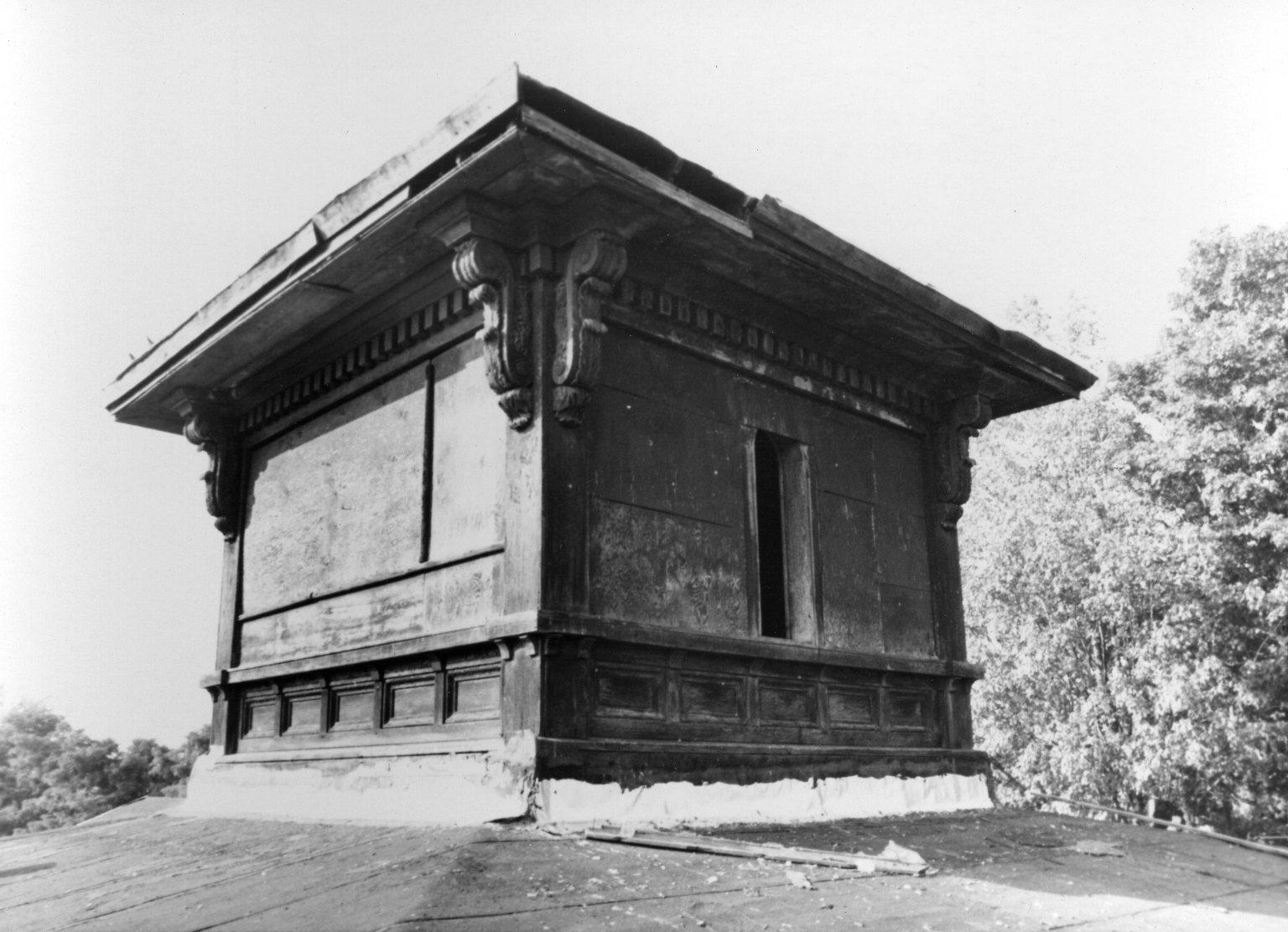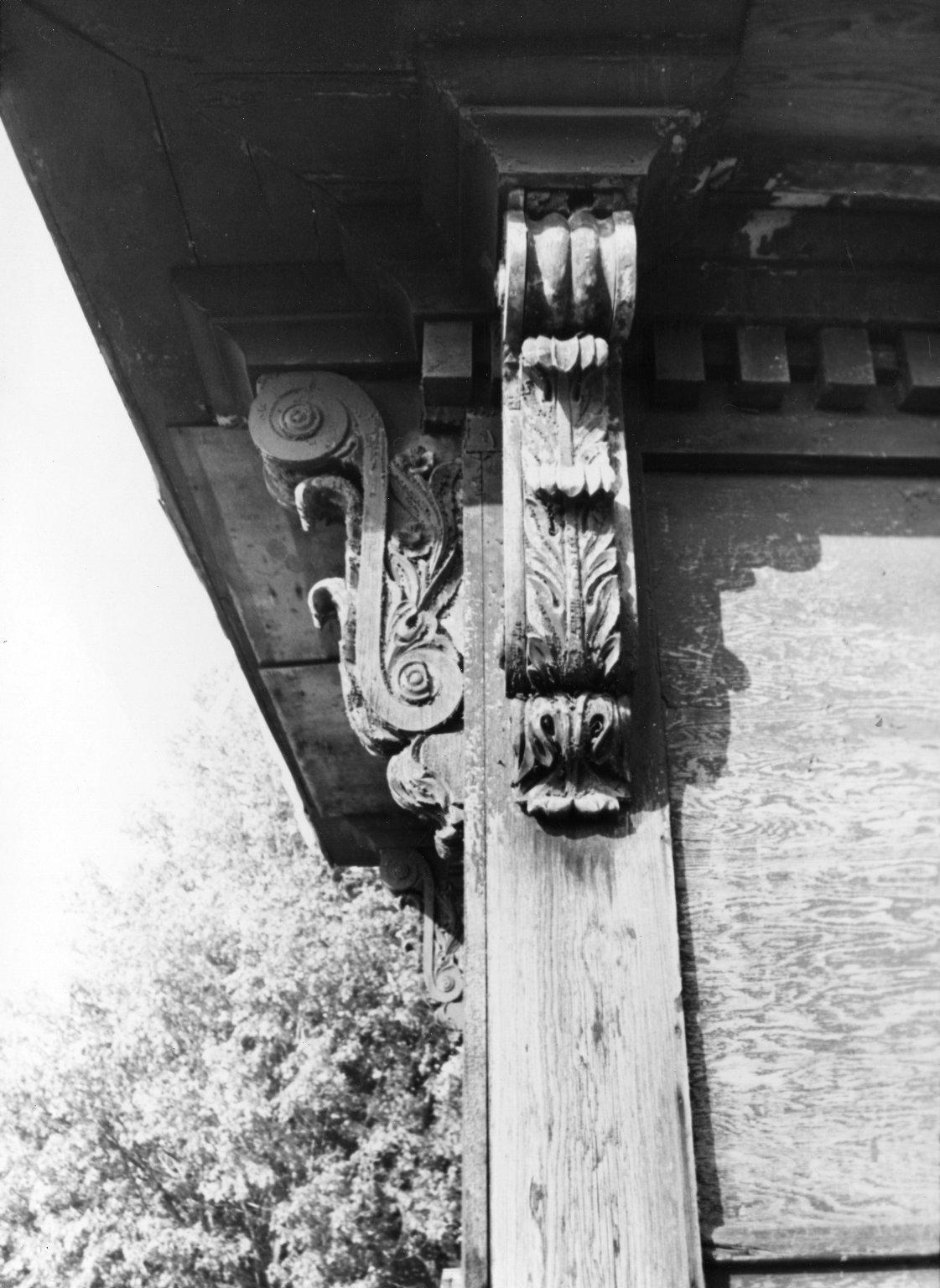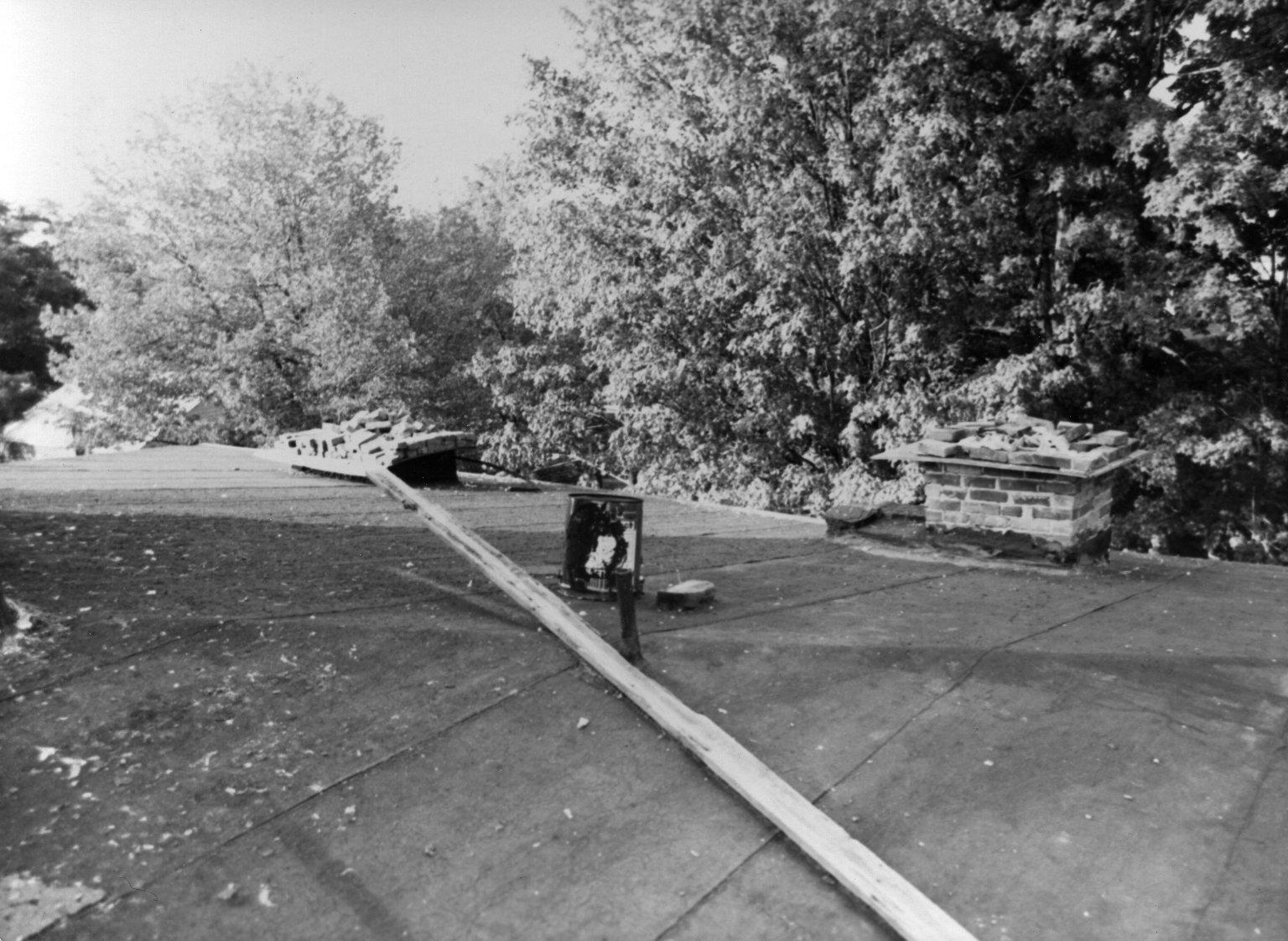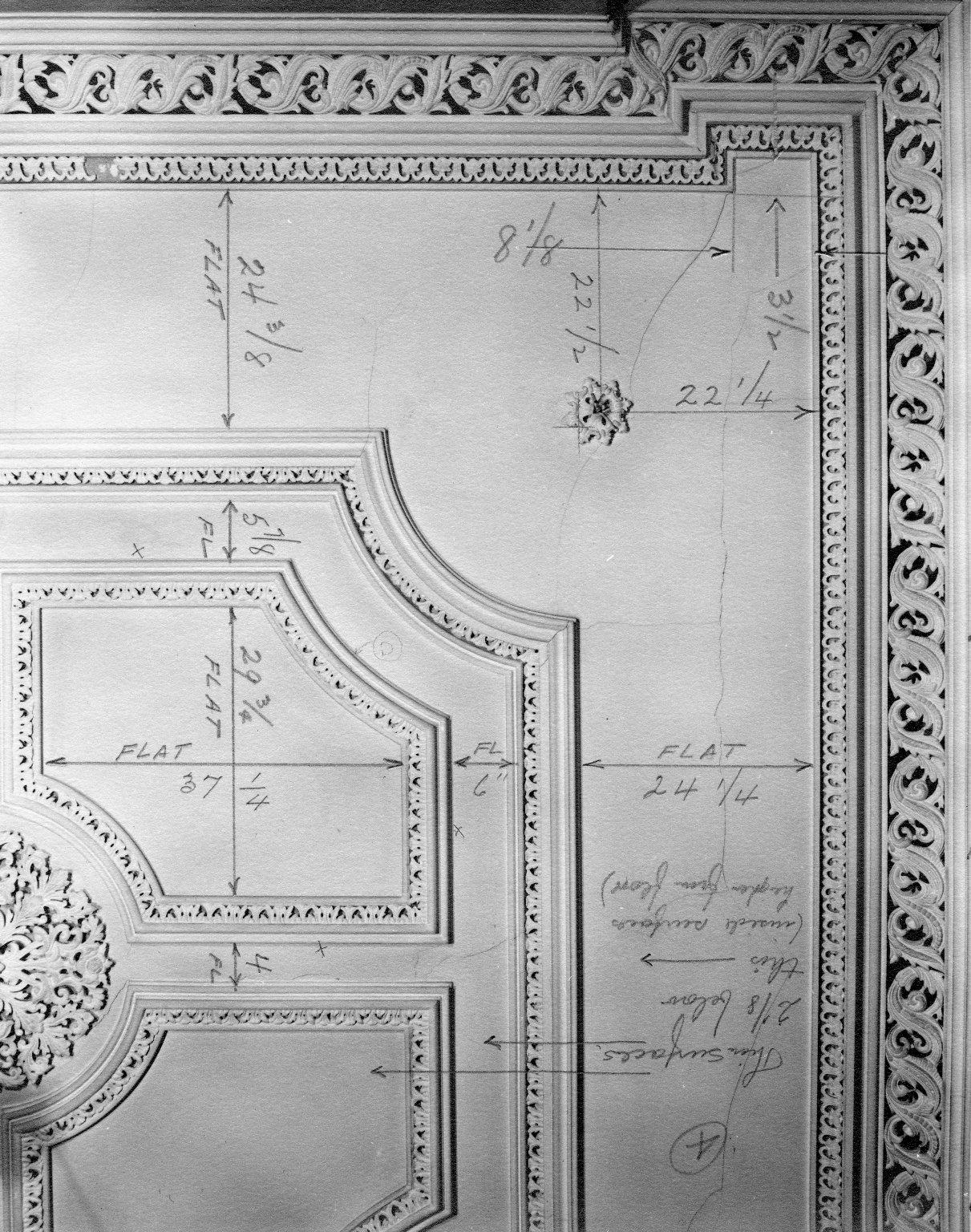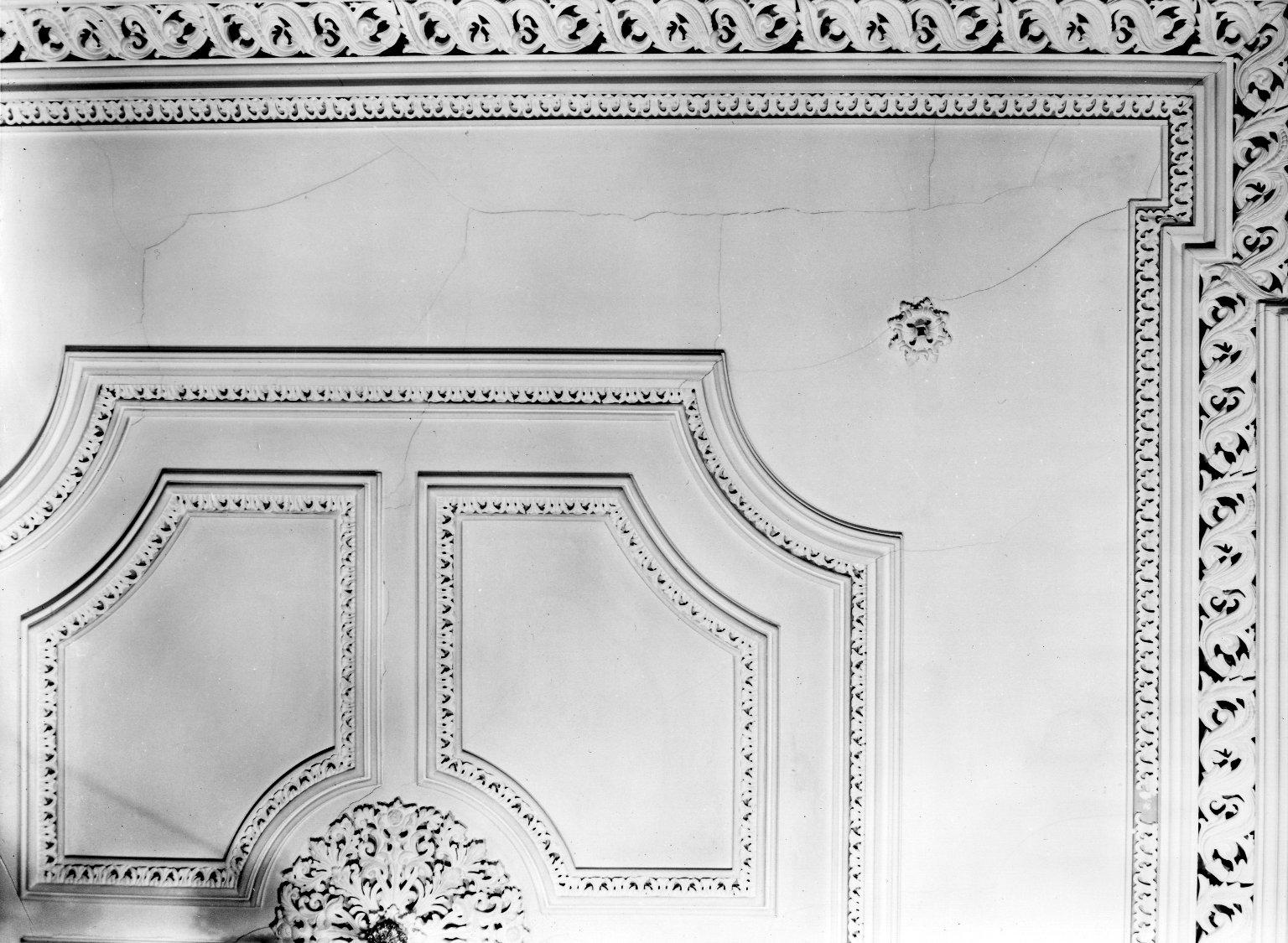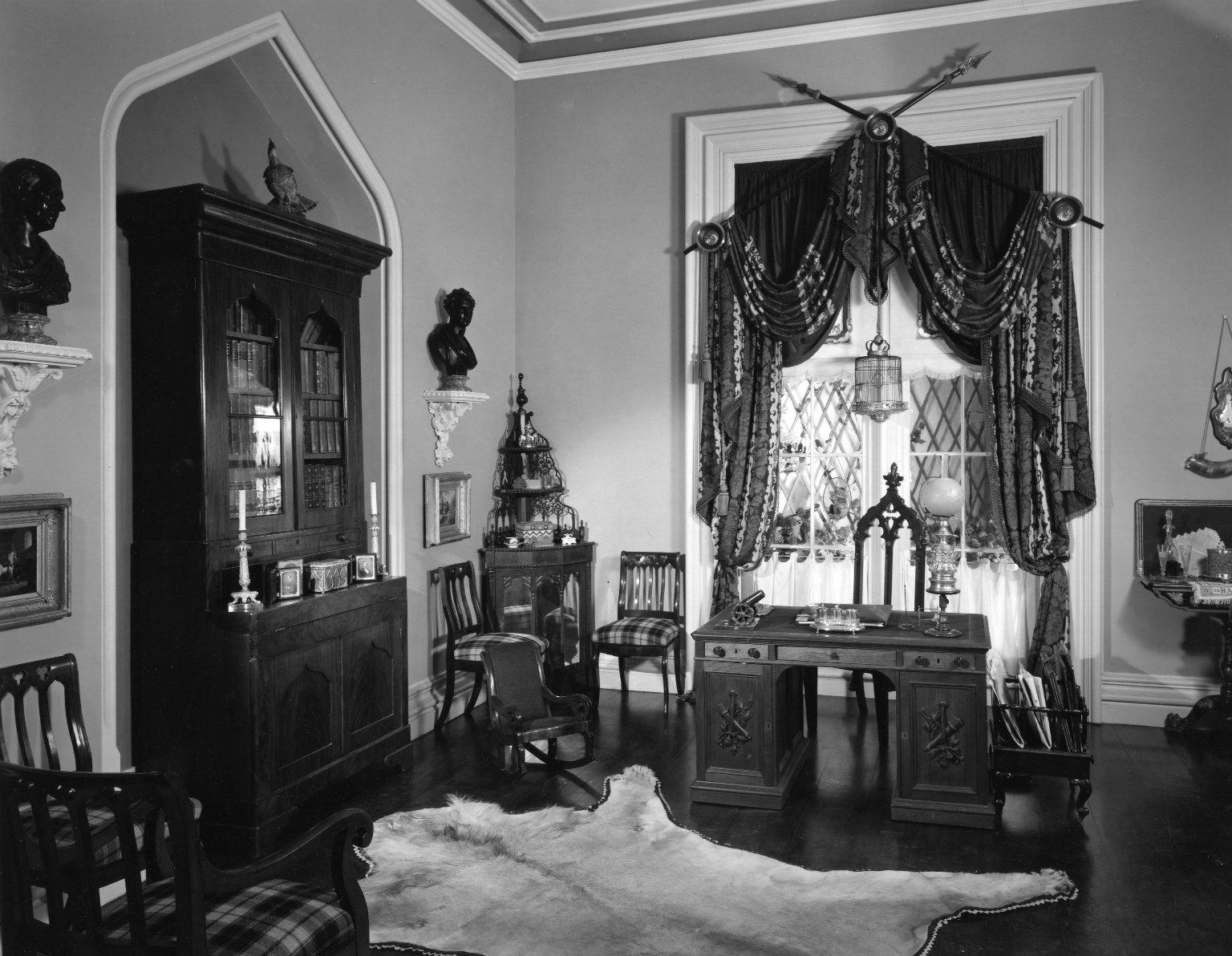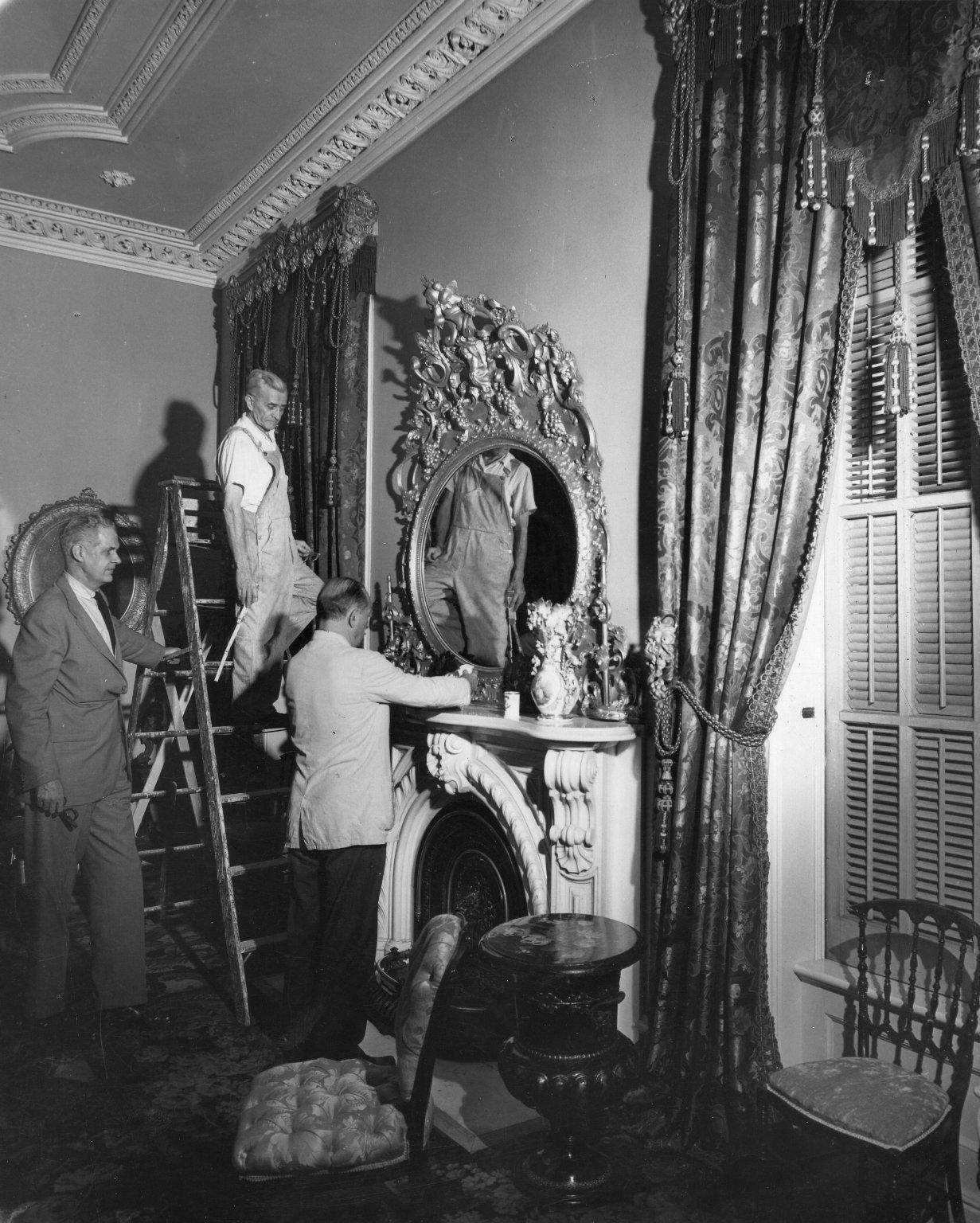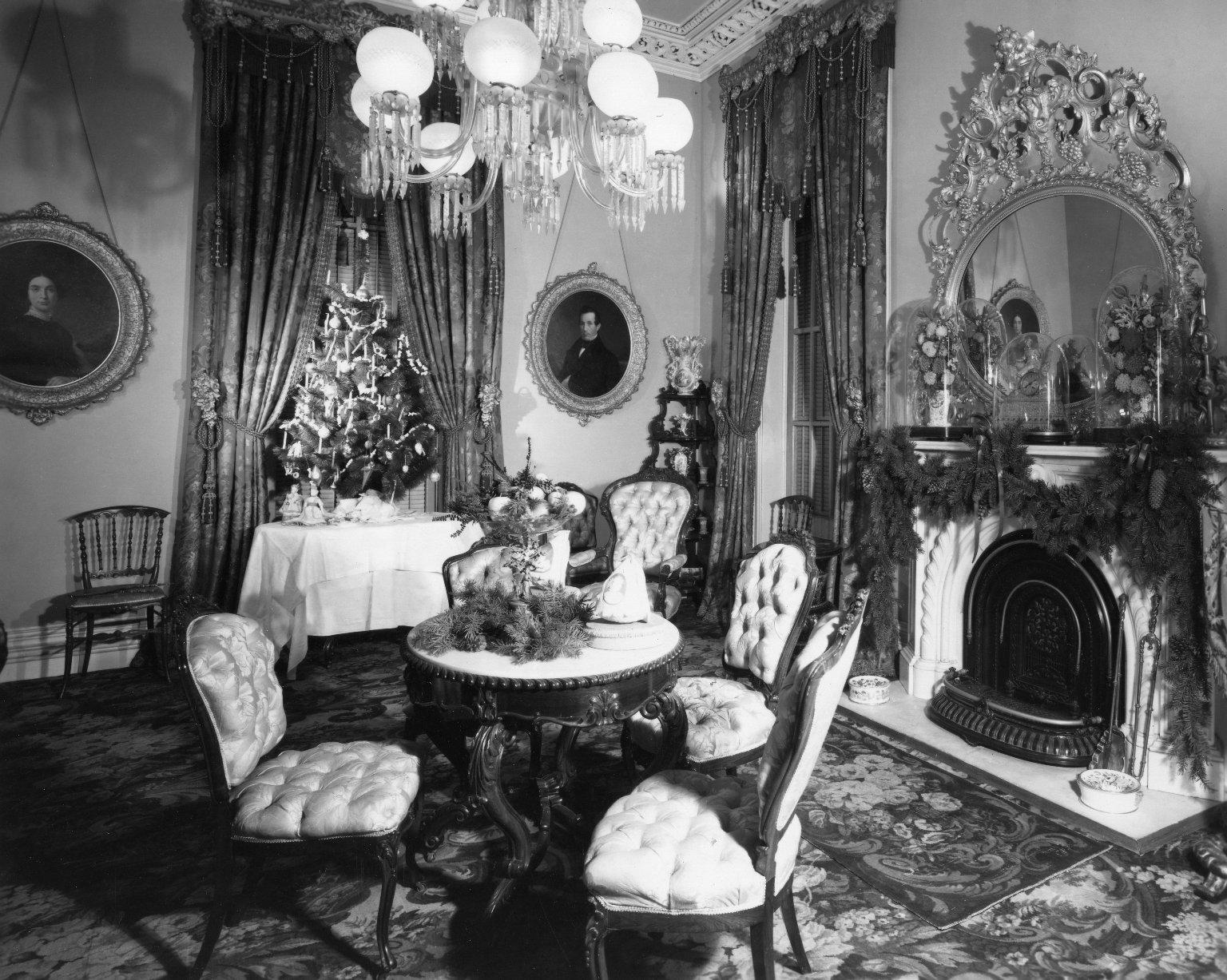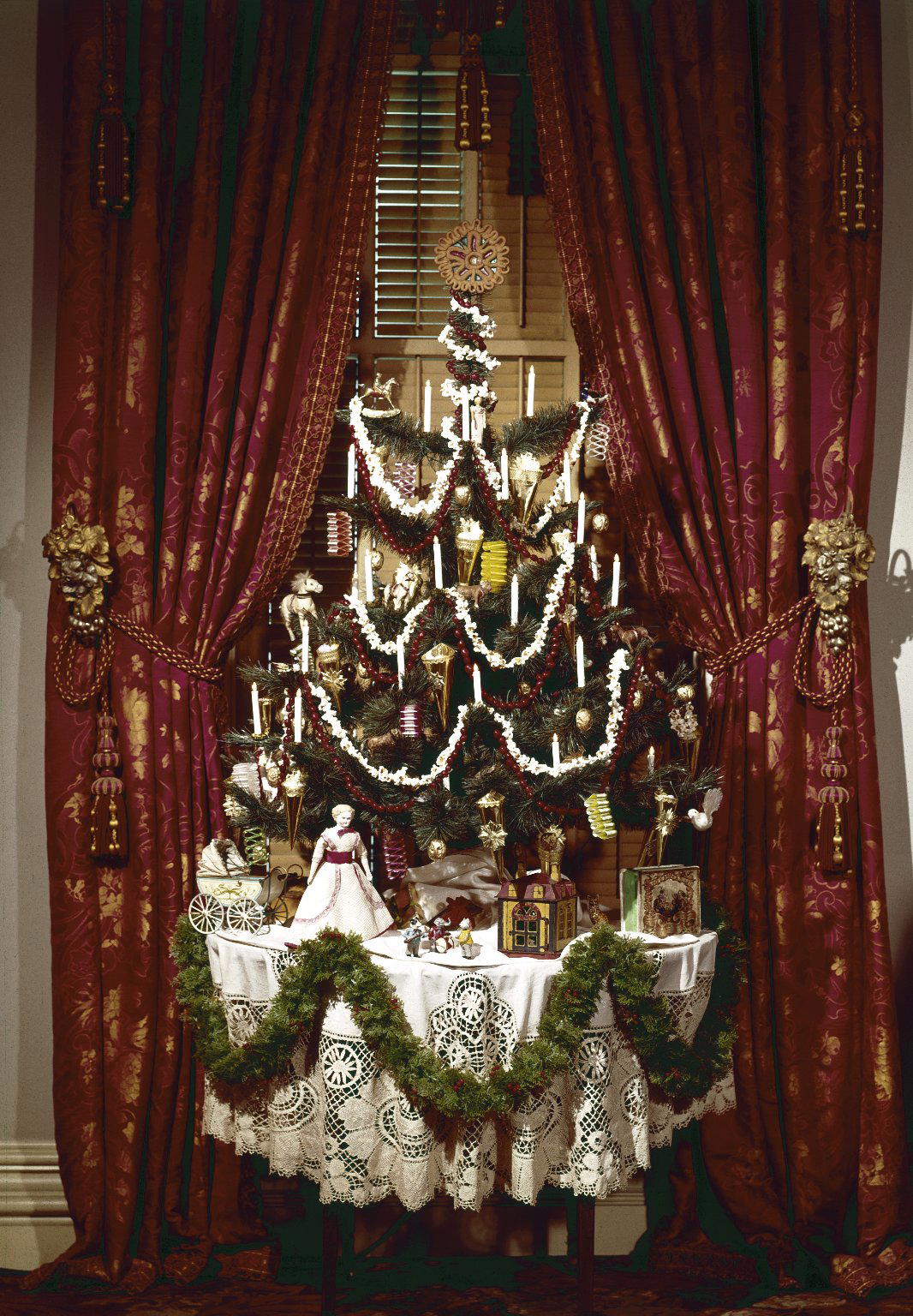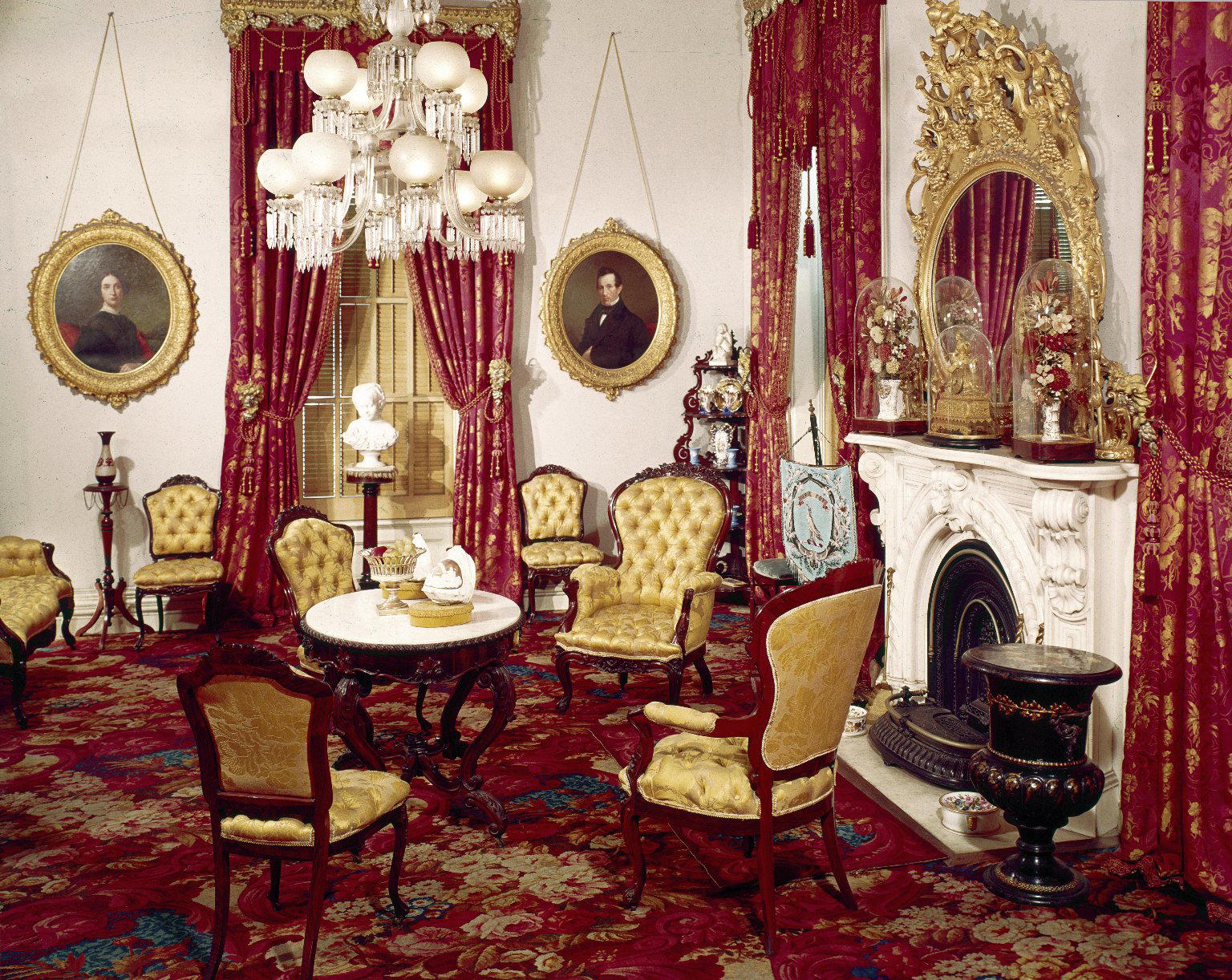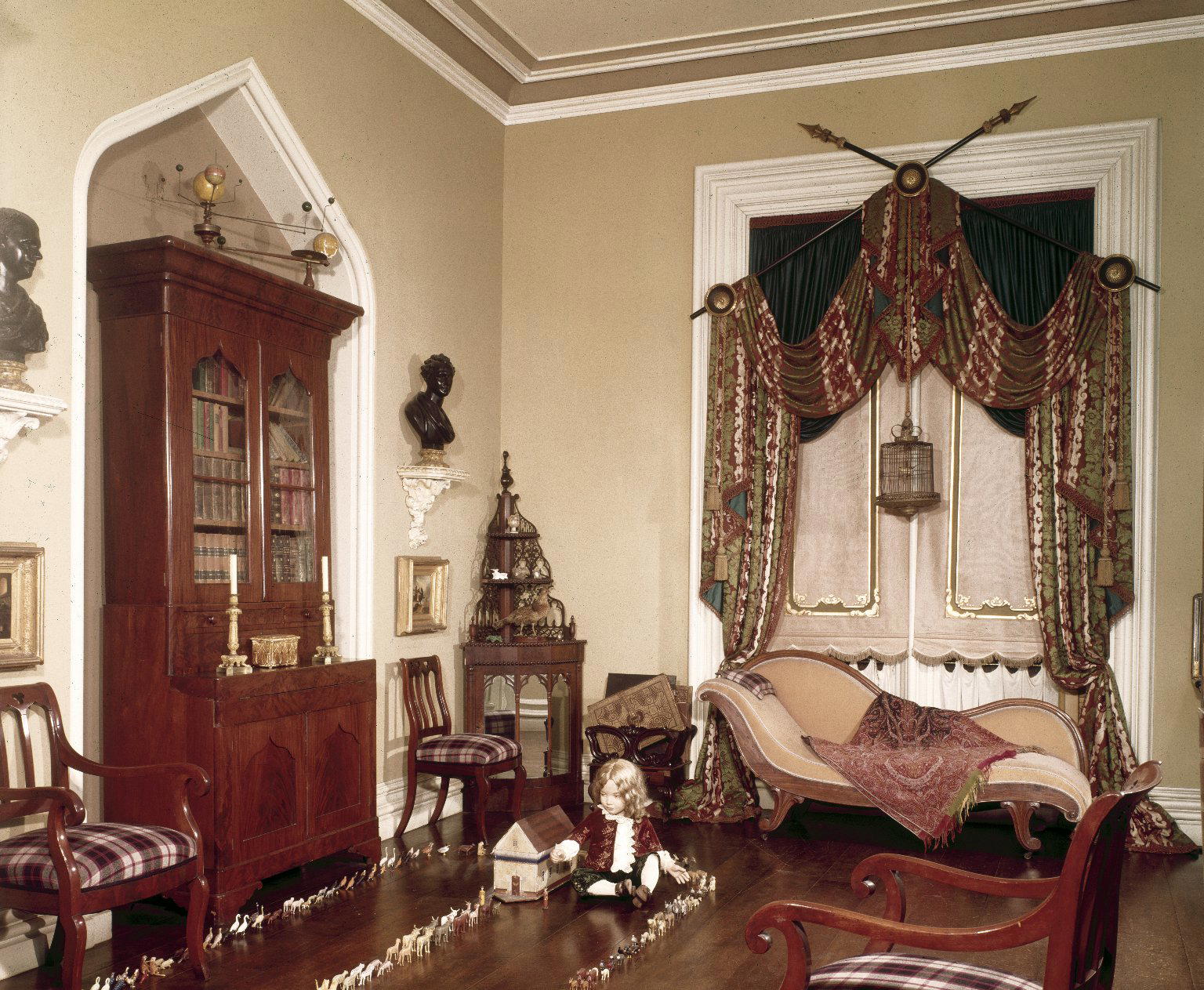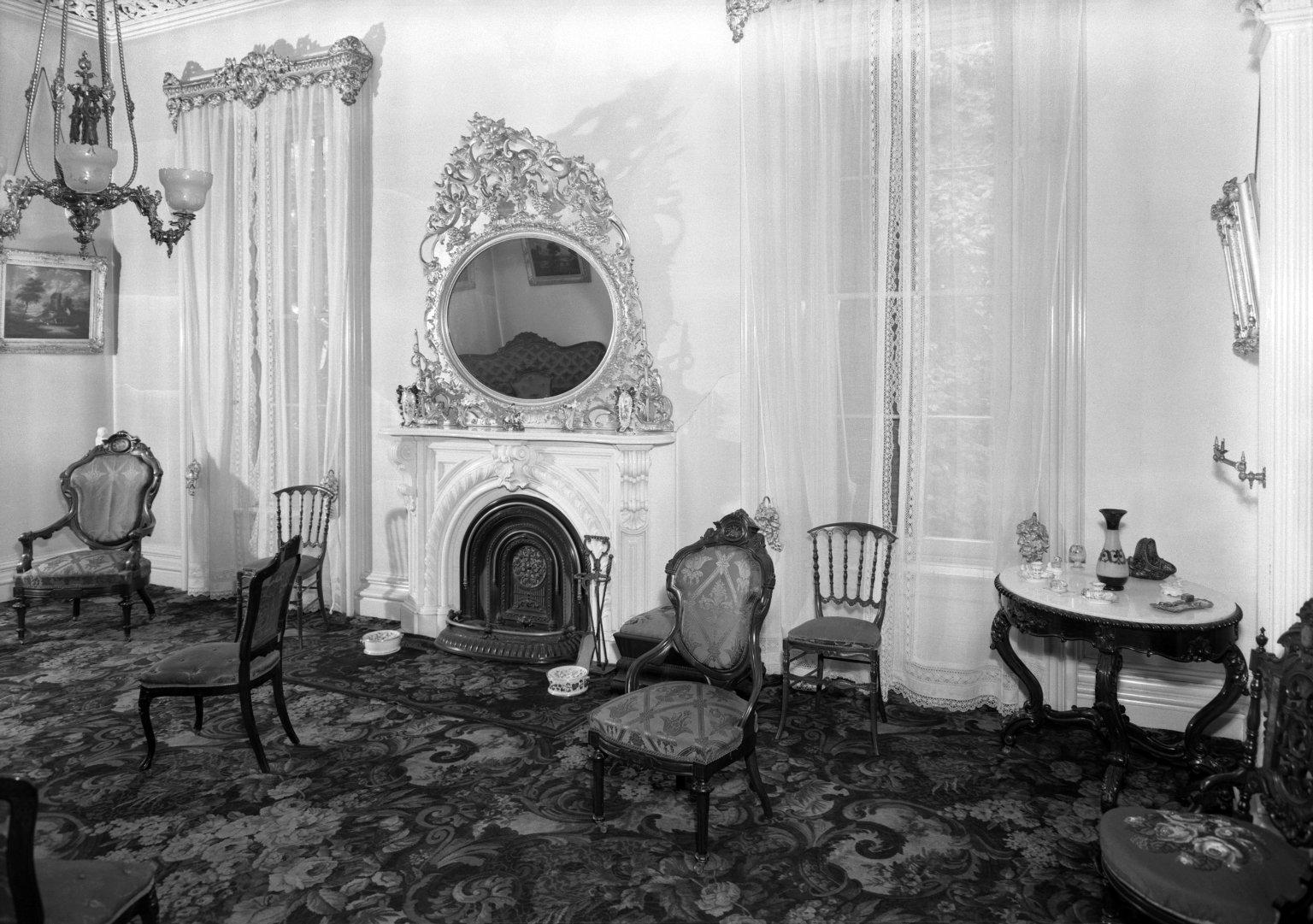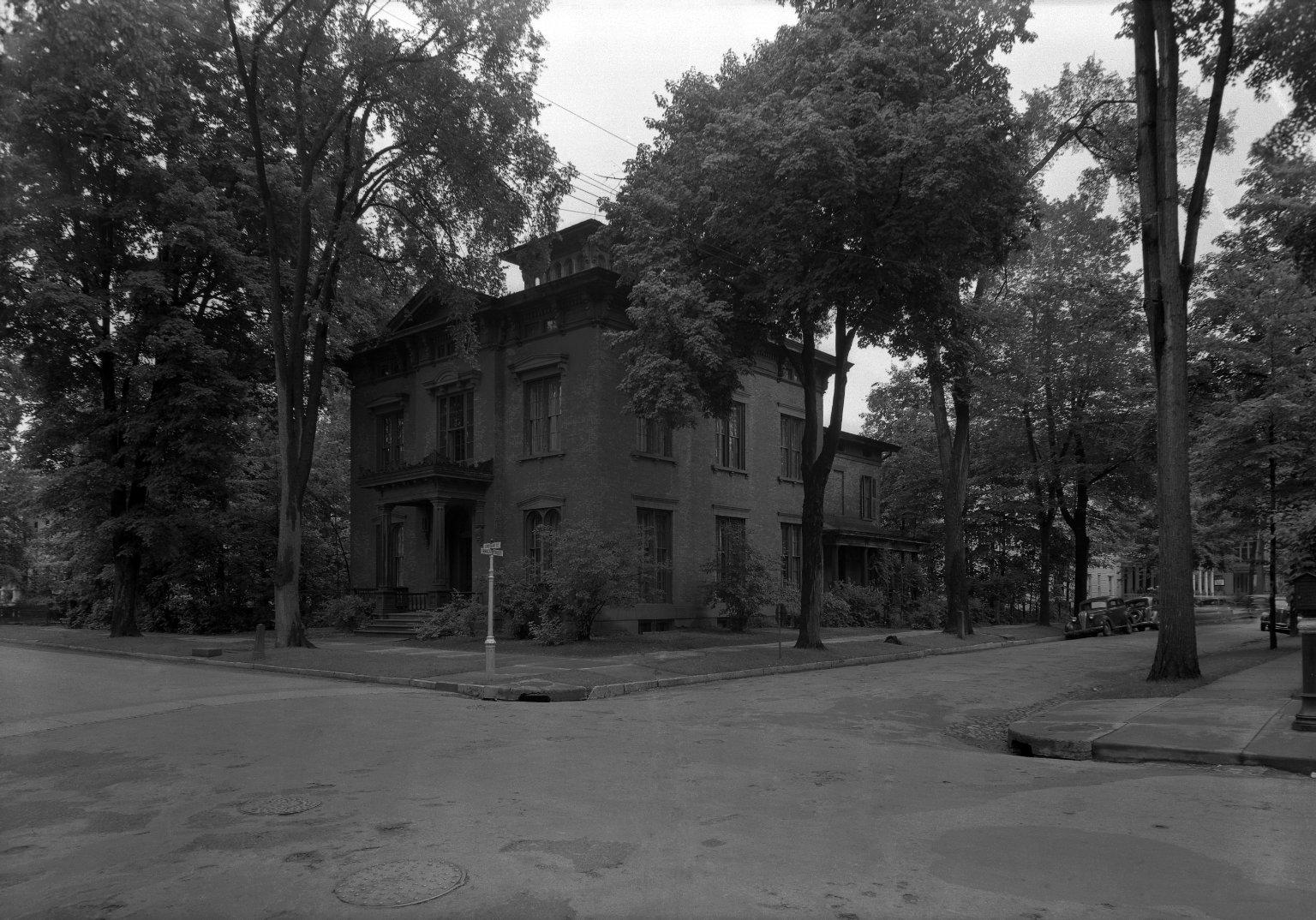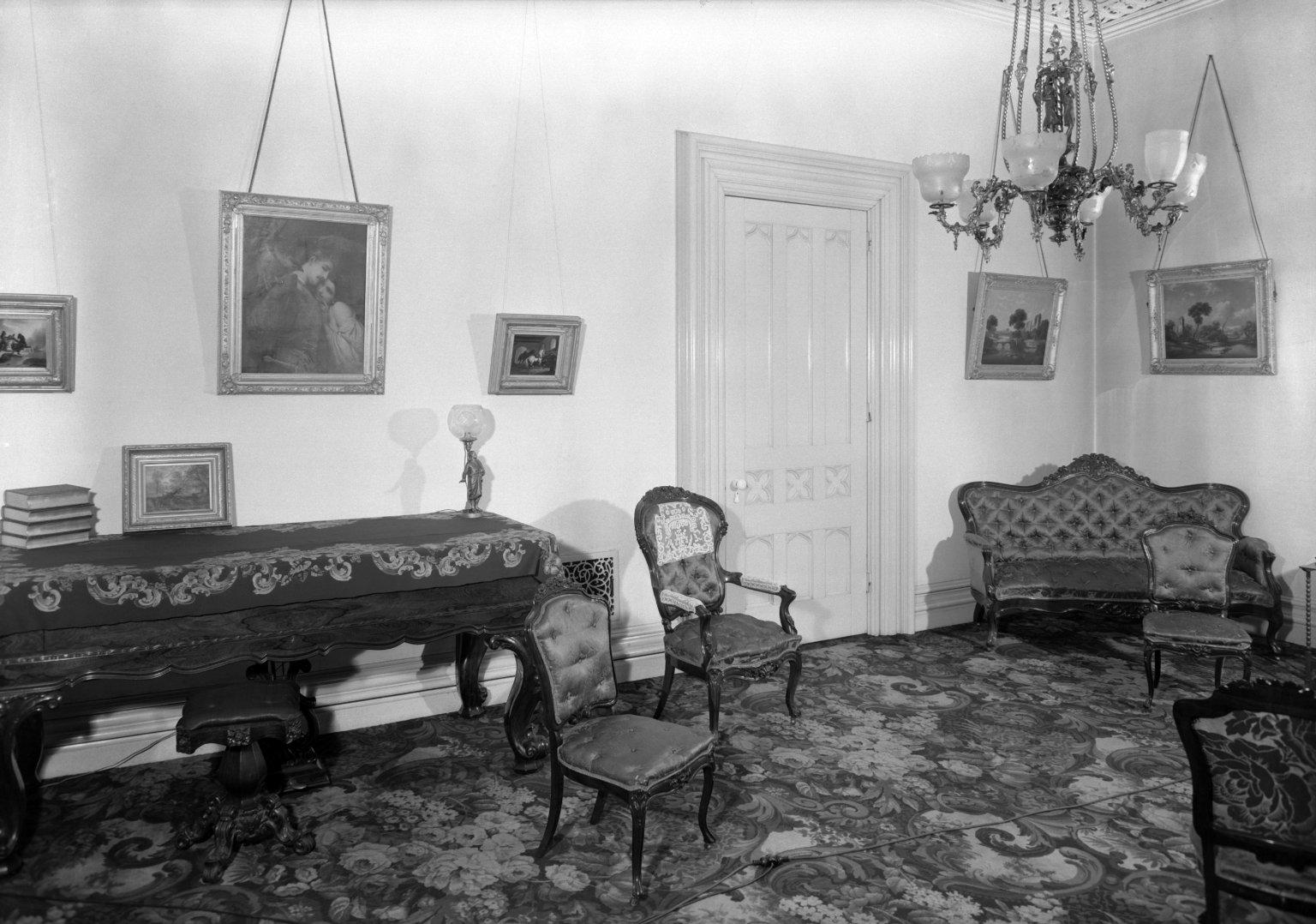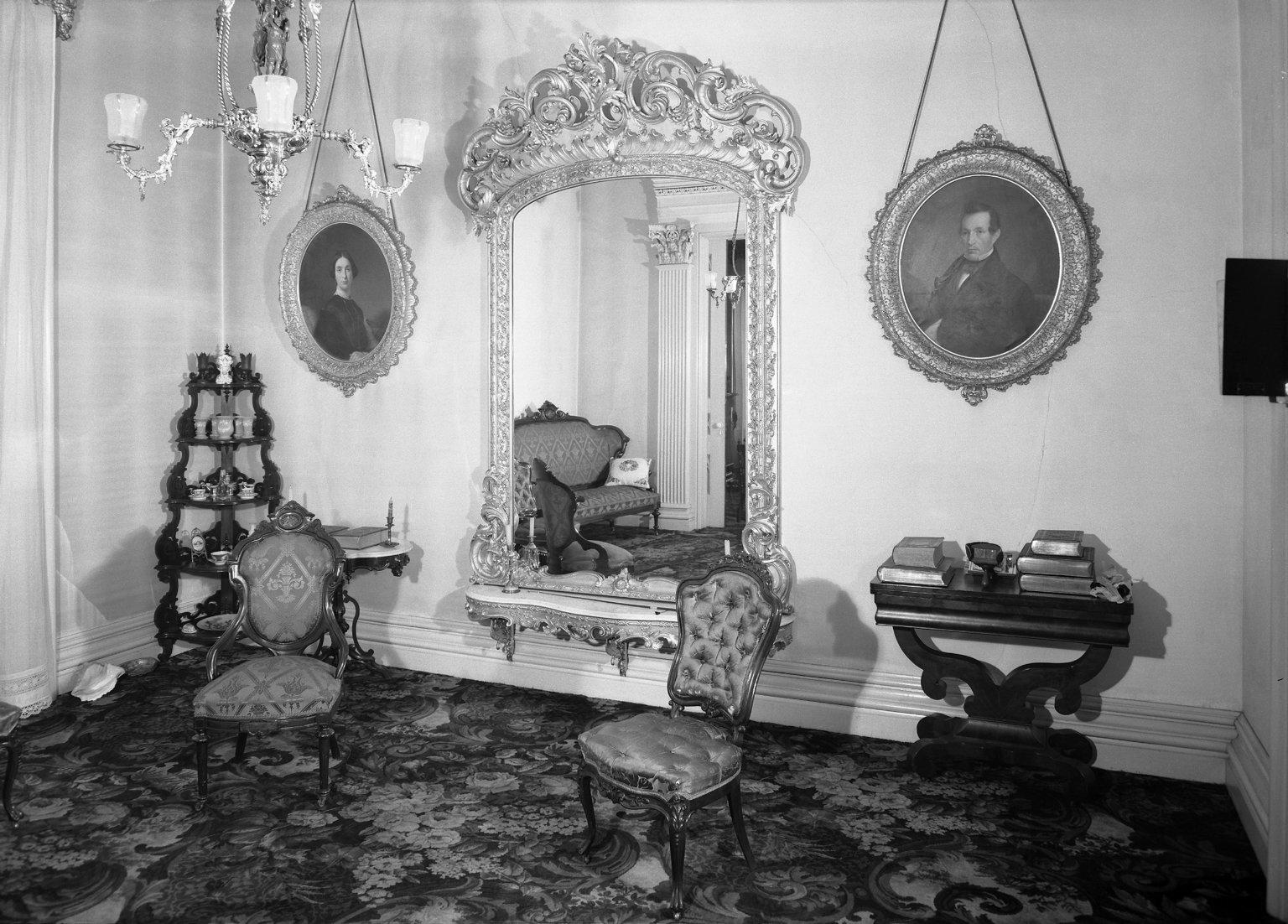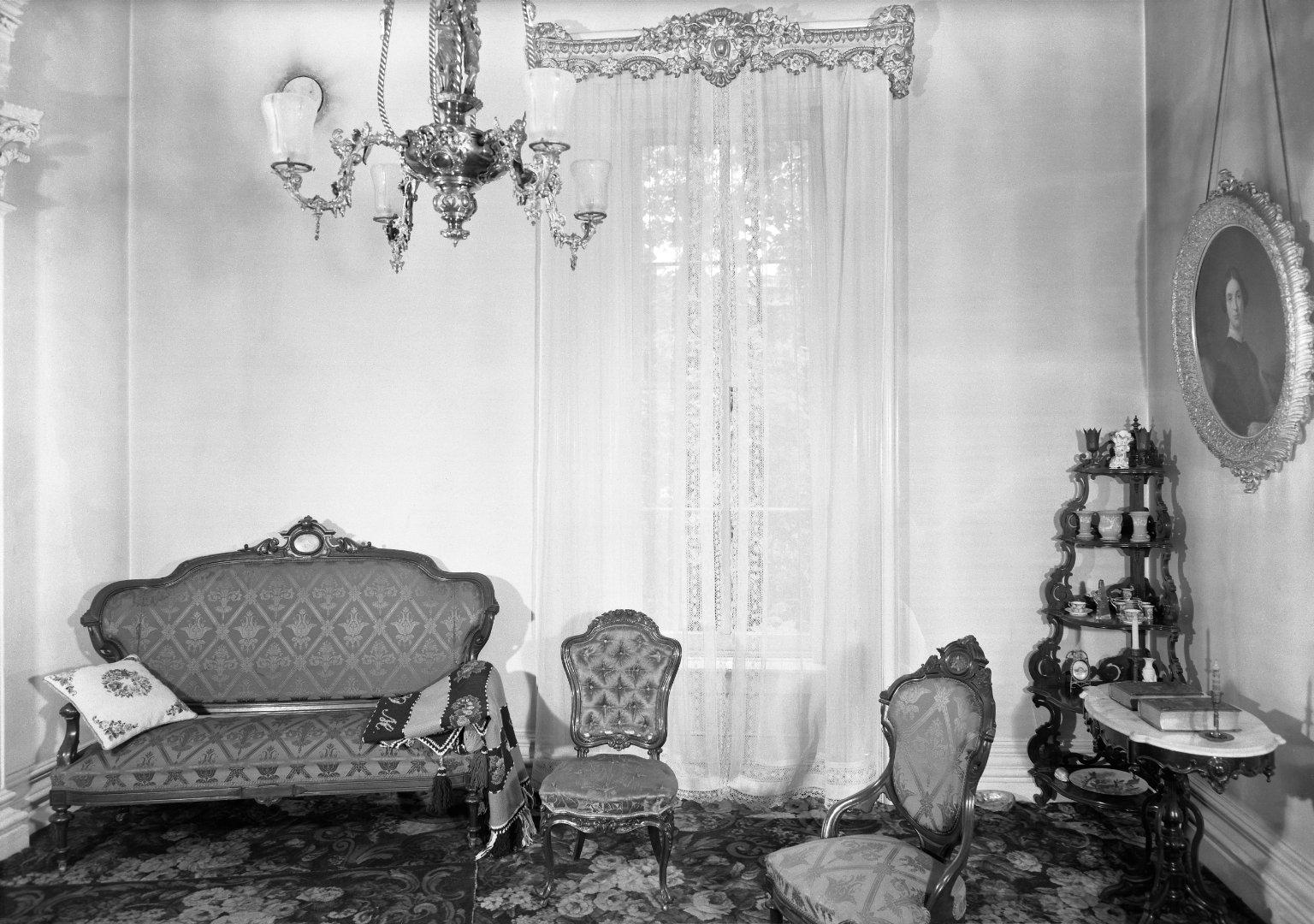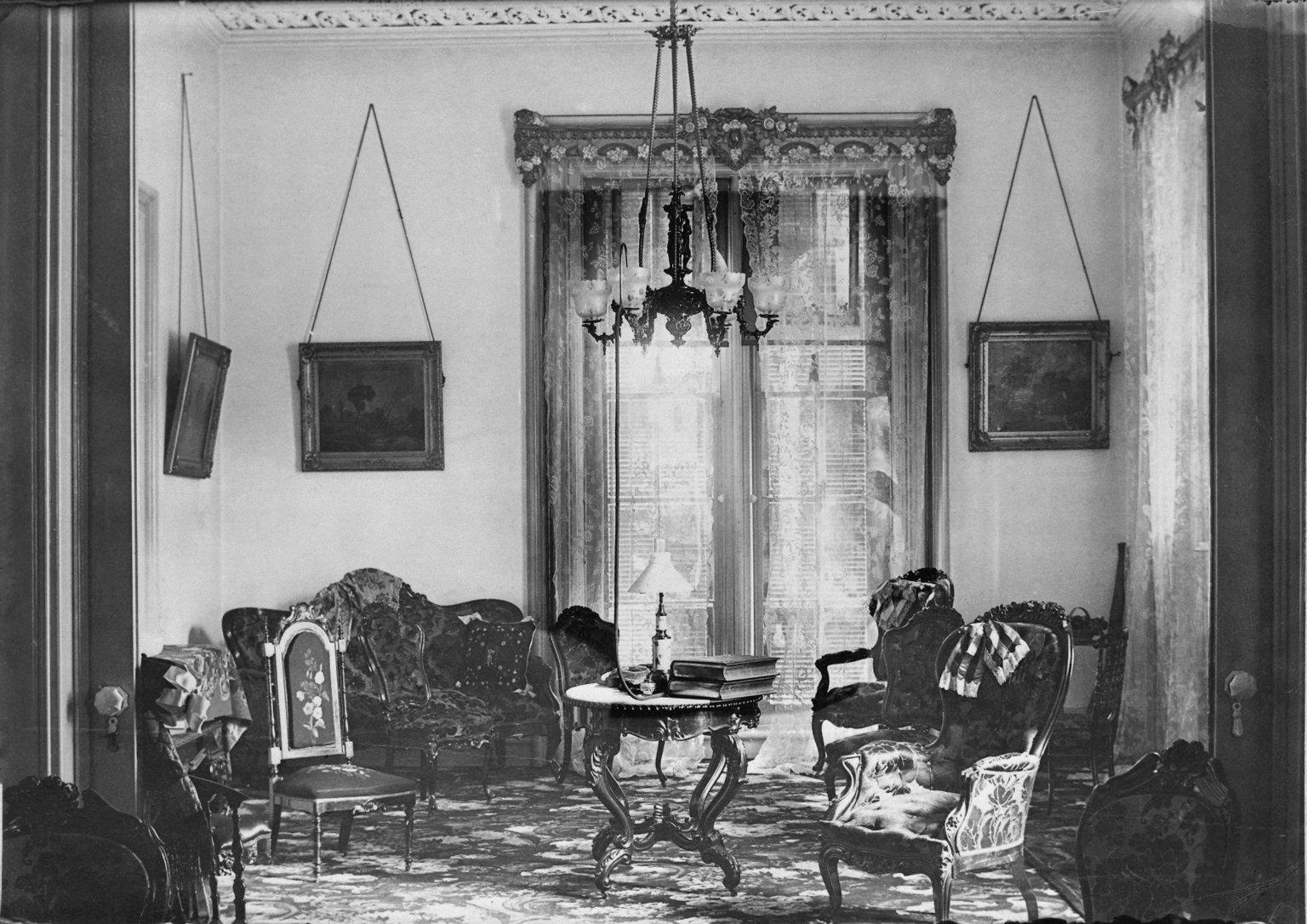Colonel Robert J. Milligan House Parlor
1 of 112
Object Label
This parlor and library are from the house still standing in Saratoga Springs, New York, built by Robert J. Milligan in 1854–56 and illustrate two of the diverse revival styles popular in interior decoration at the mid-nineteenth century in the United States. At this time, certain revival styles became associated with specific room use. The Louis XV Revival style, first developed in mid-eighteenth-century France, which emphasized curvilinear silhouettes and the realistic depiction of nature, was preferred for the parlor. The Gothic Revival style, with its allusions to the monastic life of the medieval monk-scholar, was often employed for libraries. Nearly all the objects and furniture in these two rooms are original to the house. Astonishingly, the Milligan descendants preserved many of the bills of sale for the furnishing of their house. These bills were given to the Museum in 1940, when these rooms entered the collection, and provide unique and important documentation about the makers of the contents of the rooms.
Caption
Colonel Robert J. Milligan House Parlor, 1854–1856. Brooklyn Museum, Dick S. Ramsay Fund, 40.930. Creative Commons-BY (Photo: Brooklyn Museum, DIG_E_2014_Milligan_Room_08_PS9_40.930.jpg)
Collection
Collection
Title
Colonel Robert J. Milligan House Parlor
Date
1854–1856
Geography
Place made: Saratoga Springs, New York, United States
Classification
Credit Line
Dick S. Ramsay Fund
Accession Number
40.930
Rights
Creative Commons-BY
You may download and use Brooklyn Museum images of this three-dimensional work in accordance with a Creative Commons license. Fair use, as understood under the United States Copyright Act, may also apply. Please include caption information from this page and credit the Brooklyn Museum. If you need a high resolution file, please fill out our online application form (charges apply). For further information about copyright, we recommend resources at the United States Library of Congress, Cornell University, Copyright and Cultural Institutions: Guidelines for U.S. Libraries, Archives, and Museums, and Copyright Watch. For more information about the Museum's rights project, including how rights types are assigned, please see our blog posts on copyright. If you have any information regarding this work and rights to it, please contact copyright@brooklynmuseum.org.
Frequent Art Questions
Feelin' fancy!
 That is a really ornately decorated room! It was the parlor of an upper-middle-class family in Saratoga Springs, NY. The furniture and other objects were inspired by older (mid-8th century) styles of French furniture, curving lines and carved ornament, floral patterns, etc.
That is a really ornately decorated room! It was the parlor of an upper-middle-class family in Saratoga Springs, NY. The furniture and other objects were inspired by older (mid-8th century) styles of French furniture, curving lines and carved ornament, floral patterns, etc.Is the wallpaper original? How was it printed?
 No, it is not original. The room used to be painted grey. However, wallpaper was in fashion at the time it was first built (the late 1800s). The Museum searched for documented wallpaper that would enhance the Rococo Revival style of the room. The wallpaper pattern seen today was found as a watercolor study in an illustration. In the late 1800s, Rococo Revival rooms (like the Milligan library) walls were either painted or covered with large patterned wallpapers. So it is not original but it is definitely accurate to the time period.Wallpaper would not have been screen printed in the Victorian era. The main method was block printing. Wallpapers would be hand-printed with the pattern carved into a block of wood, all work was done by hand. Vinyl wallpapers came into fashion in the 1940s and in the 1950s and are still used today.
No, it is not original. The room used to be painted grey. However, wallpaper was in fashion at the time it was first built (the late 1800s). The Museum searched for documented wallpaper that would enhance the Rococo Revival style of the room. The wallpaper pattern seen today was found as a watercolor study in an illustration. In the late 1800s, Rococo Revival rooms (like the Milligan library) walls were either painted or covered with large patterned wallpapers. So it is not original but it is definitely accurate to the time period.Wallpaper would not have been screen printed in the Victorian era. The main method was block printing. Wallpapers would be hand-printed with the pattern carved into a block of wood, all work was done by hand. Vinyl wallpapers came into fashion in the 1940s and in the 1950s and are still used today.Could you tell me a bit more about this piece here?
 For one thing, this room is a parlor, decorated in the Rococo Revival, inspired by older styles of French furniture and decor. You'll see that nearly everything in the room is decorated with floral patterns or curving lines.And this piano is definitely something that an upper-middle-class family like the Milligans would have had in their parlor, for their leisure time (something that was a new concept in American life!).This kind of instrument was actually called an "upright harp-piano. They were popular in America around 1860, and they were often made in England or Germany.You would play the keyboard and the keys would cause small leather-tipped hooks to pop up and play the strings! It makes sound like a regular piano would its just that rather than having a horizontal sounding board (usually located in the back of the piano) it was made vertical.
For one thing, this room is a parlor, decorated in the Rococo Revival, inspired by older styles of French furniture and decor. You'll see that nearly everything in the room is decorated with floral patterns or curving lines.And this piano is definitely something that an upper-middle-class family like the Milligans would have had in their parlor, for their leisure time (something that was a new concept in American life!).This kind of instrument was actually called an "upright harp-piano. They were popular in America around 1860, and they were often made in England or Germany.You would play the keyboard and the keys would cause small leather-tipped hooks to pop up and play the strings! It makes sound like a regular piano would its just that rather than having a horizontal sounding board (usually located in the back of the piano) it was made vertical.What type of piano is this?
 That is a piano-harp hybrid instrument. When you played the piano keys, small hooks inside would pluck the strings of the harp. These were popular in the United States around 1860 and were usually made in England or Germany.
That is a piano-harp hybrid instrument. When you played the piano keys, small hooks inside would pluck the strings of the harp. These were popular in the United States around 1860 and were usually made in England or Germany.Would children be allowed in this room?
 Do you see the play area next to here in the library room? The curator created that space to illustrate that children would have used that space.Within the parlor space, the curator also placed a smaller child's chair, which would tell us that children would have been in that space. Children would be taught proper etiquette in the parlor, notice the toys are not in that room!
Do you see the play area next to here in the library room? The curator created that space to illustrate that children would have used that space.Within the parlor space, the curator also placed a smaller child's chair, which would tell us that children would have been in that space. Children would be taught proper etiquette in the parlor, notice the toys are not in that room!Can you tell me about the piano?
That is a piano-harp. A person would play the keyboard like a piano, and the keys would cause delicate rods with hammer-like ends to spring up and pluck the strings. Interestingly, the sound that comes out is that of a piano, not of a harp.What is this instrument?
 It is called a "piano-harp."The keyboard is just like a piano keyboard, and the pressure of the keys activates hammers with small hooked tips that pop up and pluck the strings of the harp section. It's lighter than a piano and it could more easily be moved around the room.However, they were only made for a short period in the 1800s, apparently the piano-harp trend didn't really catch on!
It is called a "piano-harp."The keyboard is just like a piano keyboard, and the pressure of the keys activates hammers with small hooked tips that pop up and pluck the strings of the harp section. It's lighter than a piano and it could more easily be moved around the room.However, they were only made for a short period in the 1800s, apparently the piano-harp trend didn't really catch on!Amazing! Do you know what year and where the piano was made?
I don't know about this one specifically however, the instrument-type was invented and patented by Johan Christian Dietz in 1814.The instrument is lighter than a piano and could be easily moved around the room, perfect for the entertaining the Milligan family would do in their lovely parlor!Are the portraits in the Milligan parlor of Mr. and Mrs. Milligan?
 Yes, in fact those portraits are of Mr. and Mrs. Milligan. What is so fascinating about this particular period room is that we have many of the original furnishings from the actual house in our collection.
Yes, in fact those portraits are of Mr. and Mrs. Milligan. What is so fascinating about this particular period room is that we have many of the original furnishings from the actual house in our collection.How difficult is it to move an entire room from a house into a museum?
Very difficult! It's done by a whole team of curators, conservators, and technicians. Rooms are disassembled, pieces are labeled and numbered, and everything is very carefully packed for the move.Then, once the room arrives, it has to be re-assembled, and decisions are made about things like new wallpapers or upholstery, of the old ones are too worn to be displayed. Oh, and lighting has to be installed, and labels need to be researched and written. It's a really laborious and time-consuming process, but fascinating and well-worth the effort!Yup, definitely worth the effort!Yes indeed! And we're lucky to have so many good historic interiors here.Who painted this?
 Landscape paintings like these were very common in 19th century American interior decorations. This is by John Taggart, it shows the outside of Colonel Mulligan's home. Colonel Robert James Milligan was a lumberer in Saratoga Springs, NY and you can see the library and parlor from his 19th-century home on view.
Landscape paintings like these were very common in 19th century American interior decorations. This is by John Taggart, it shows the outside of Colonel Mulligan's home. Colonel Robert James Milligan was a lumberer in Saratoga Springs, NY and you can see the library and parlor from his 19th-century home on view.Can you tell me about this man?
 Sure! That is a painting of the original owner of the home where this parlor and the adjoining library came from. His name is Colonel Robert J. Milligan. Milligan was a Civil War vet who went on to become very successful in the lumber industry. The other portrait is of his wife!We were wondering about the woman. Thanks!Of course! They were painted by the same artist. I love the two rooms from the Milligan house because much of those furnishings and decorative elements are original to the home, which is quite rare for Museum period rooms.
Sure! That is a painting of the original owner of the home where this parlor and the adjoining library came from. His name is Colonel Robert J. Milligan. Milligan was a Civil War vet who went on to become very successful in the lumber industry. The other portrait is of his wife!We were wondering about the woman. Thanks!Of course! They were painted by the same artist. I love the two rooms from the Milligan house because much of those furnishings and decorative elements are original to the home, which is quite rare for Museum period rooms.Is this Noah's ark?
 Yes! This is an example of the type of toys that children would have had at the time. It was intended for play, but also as a means of telling Biblical stories.It's so cute.It is!
Yes! This is an example of the type of toys that children would have had at the time. It was intended for play, but also as a means of telling Biblical stories.It's so cute.It is!Do the seasons change in these miniatures?
 Sadly, not. It would be wonderful if they did! It is winter all year round at the miniature Robert J. Milligan House.
Sadly, not. It would be wonderful if they did! It is winter all year round at the miniature Robert J. Milligan House.What can you tell me about this piano?
 That is a piano harp! When you play the piano keys, small hooks inside would pluck the stings of the harp. These were popular in the US in the 1860s.
That is a piano harp! When you play the piano keys, small hooks inside would pluck the stings of the harp. These were popular in the US in the 1860s.Can you tell me about this interior design style?
 This parlor is in the Rococo Revival style, which was just one of the many revival styles popular in the US during the mid-nineteenth century. A single house could contain rooms in several different styles. For example, the library in this house was decorated in the Gothic Revival style. The Rococo revival style was inspired by the curvilinear designs of the mid-eighteenth century in France. The style was most commonly associated with women, and was used for parlors and bedrooms.
This parlor is in the Rococo Revival style, which was just one of the many revival styles popular in the US during the mid-nineteenth century. A single house could contain rooms in several different styles. For example, the library in this house was decorated in the Gothic Revival style. The Rococo revival style was inspired by the curvilinear designs of the mid-eighteenth century in France. The style was most commonly associated with women, and was used for parlors and bedrooms.Can you tell me more about this?
 These are quite elaborate window treatments, but would have been accessible to the upper middle class because of recent developments in textile manufacturing. If you look around the room, you can see the abundance of textiles, including a lot of matching furniture. This type of ensuite decorating would historically have been for only the extremely wealthy. In the 19th century, it became available to the middle class for the first time! Home owners put a majority of textiles in the parlor, as this was the most public room, where they would receive guests.The crossed arrows in the library window treatment is a military reference, appropriate to this historically masculine space.
These are quite elaborate window treatments, but would have been accessible to the upper middle class because of recent developments in textile manufacturing. If you look around the room, you can see the abundance of textiles, including a lot of matching furniture. This type of ensuite decorating would historically have been for only the extremely wealthy. In the 19th century, it became available to the middle class for the first time! Home owners put a majority of textiles in the parlor, as this was the most public room, where they would receive guests.The crossed arrows in the library window treatment is a military reference, appropriate to this historically masculine space.In the period rooms, were the pieces acquired from the rooms themselves or were they pieced together to match photos?
It depends. In some cases, like the Weil-Worgelt Study, the entire room, including the panelling inside and the furniture, were acquired together. In other cases, like the Mid-Nineteenth Century Parlor and Library, the rooms were furnished based on our curators' knowledge of the styles you would see in a room of that style at the time.Tell me more.
 This is the parlor and library of an upper-middle class family from Saratoga Springs, NY. Throughout the 19th century, designers looked to the past and revived old styles. The feminine, flowery Rococo Revival style was considered appropriate for the parlor; whereas the more serious, moralistic Gothic Revival style was often used in libraries.
This is the parlor and library of an upper-middle class family from Saratoga Springs, NY. Throughout the 19th century, designers looked to the past and revived old styles. The feminine, flowery Rococo Revival style was considered appropriate for the parlor; whereas the more serious, moralistic Gothic Revival style was often used in libraries.I really love the little models of the houses.
Those are great! I recently learned a little bit about the model maker. He had a fascinating life!Albert Fehrenbacher was a master woodcarver from the Black Forest region in Germany. Taken prisoner during the Second World War, he spent five years in a Russian camp during which time he began work on a panoramic Nativity scene, designed to carry the message of peace and brotherhood for all.Upon his release, he brought his Nativity scene to the United States, where it was shown in over 150 churches across the country. He was hired to work at several American museums, building models.Grateful for the friendliness with which he was received in the United States, Fehrenbacher said, “This country, it has been good to me. I am happy in this work I do for the Brooklyn Museum." He apologized for “having much trouble with speaking English...but I hope I speak from heart to heart with my models.”That is such a wonderful story. My father was born in a Russian camp during the war.Wow, what a fascinating link.One of the labels says the walls of this room used to be bare? Why? And why is it important to notice?
 The label mentions that the walls were bare so that you have a point of comparison when looking at the room as we have it installed. The rooms are arranged to create the best example of design during a given period, like a collage of all the relevant design elements, so they may be slightly different from the original rooms they are based on.Cool!
The label mentions that the walls were bare so that you have a point of comparison when looking at the room as we have it installed. The rooms are arranged to create the best example of design during a given period, like a collage of all the relevant design elements, so they may be slightly different from the original rooms they are based on.Cool!Why is the glassware red?
 It was fashionable. This was known as "cranberry glass," and was very popular especially in 19th century England. Gold added to the glass gives it this red color. The plaid flooring and upholstery in this room are also meant to mimic the decor of Queen Victoria in England.
It was fashionable. This was known as "cranberry glass," and was very popular especially in 19th century England. Gold added to the glass gives it this red color. The plaid flooring and upholstery in this room are also meant to mimic the decor of Queen Victoria in England.Who is this?
That is Mr. Robert J Milligan. He was the owner of this house and was an active abolitionist. These portraits were painted in 1851. You can see that the Milligans designed their home at the height of fashion in the Rococo Revival style.Is the furniture original from the Milligan House? I can't tell from the label.
The woodwork and a majority of the furnishings in these two rooms are original to the home—a rare occurrence for period rooms!In the library, the only thing is that a reproduction is the plaid carpet and upholstery. They are not original but do follow a trend set by Prince Albert, who used the pattern for his home in Scotland. Also, wallpaper was added in both rooms, as a way to include some more material from the period.Oh wow! Thank you!Yes! It's fascinating to see how rooms in a single home could be decorated in such dramatically different styles.Gothic revival was seen as a moralistic and masculine style because it was associated with medieval monasteries, which were centers of learning, making it suitable for a library. Rococo revival on the other hand---full of curves and shells and flowers---was seen as feminine and therefore more appropriate for the female space of the parlor.It's interesting that different styles represent different genders. I'm not sure if that's a good thing or a bad thing.
It says a lot about the culture of the mid-19th century!It does, doesn't it? Would you say the concept is outdated? I just don’t think I see it that way. Rococo is not feminine to me, it is more of a personal choice.I'm not sure it's entirely outdated (thinking of the "man cave" concept, for one example) but the styles have certainly changed. The funny thing is that the original French Rococo style, from the 18th century, was not gendered in the slightest.But 19th century Americans had such gendered codes of behavior that the design of interior spaces was inevitably wrapped up in ideas of propriety for the sexes.For example, the parlor was seen as a space where women would entertain guests, and so the revival of Rococo here focuses on the more floral elements of the style.Was all of this all (except the floor & walls) actually moved and installed in the museum exactly how it was in its original location? Or was this put together to represent the house as it was?
This corridor is built from a few different houses. The door way that you photographed is from a house here in Brooklyn, 236 Clermont Ave. This room you photographed, on the other hand, comes from a house in Saratoga Springs that belonged to the Milligan Family.There are a few full houses in the museum as well where you can see the way they were actually laid out!Ok, so each of these rooms in the hallway comes from different homes?Most of them, yes! The two rooms at the end, a parlor and a library, are connected, and both come from the Milligan house.Tell me more.
This room is a great representation of the Rococo Revival style prevalent in the US in the mid 19th century.Rococo Revival was especially popular for parlor decorations. You'll notice that the neighboring library is in a drastically different style even though the two rooms come from the same house.The parlor was the most ornate room in the house, reserved for entertaining. The Rococo Revival style is inspired by the mid-eighteenth-century Louis XV style of France.You guys are good
Have information?
Have information about an artwork? Contact us at




















